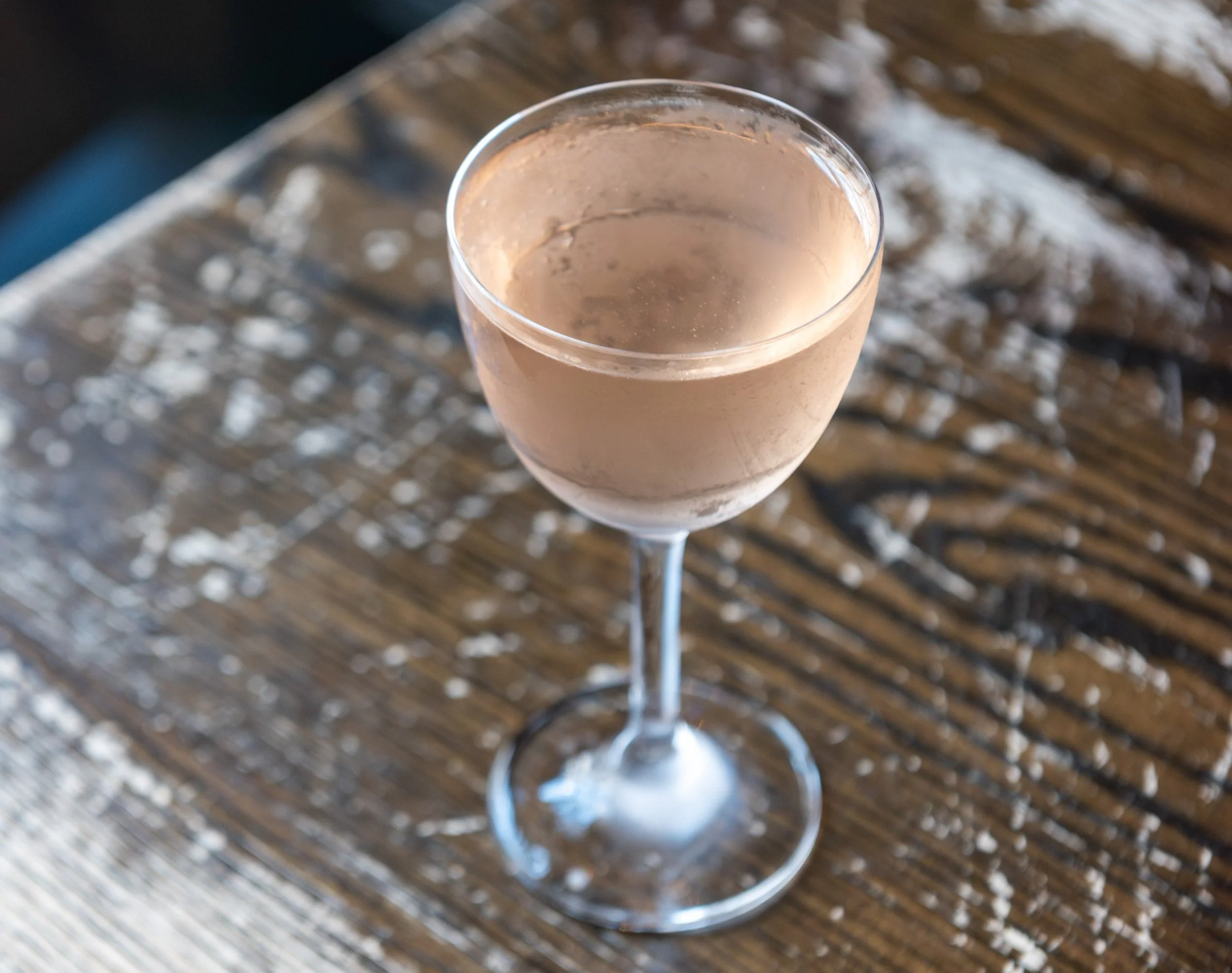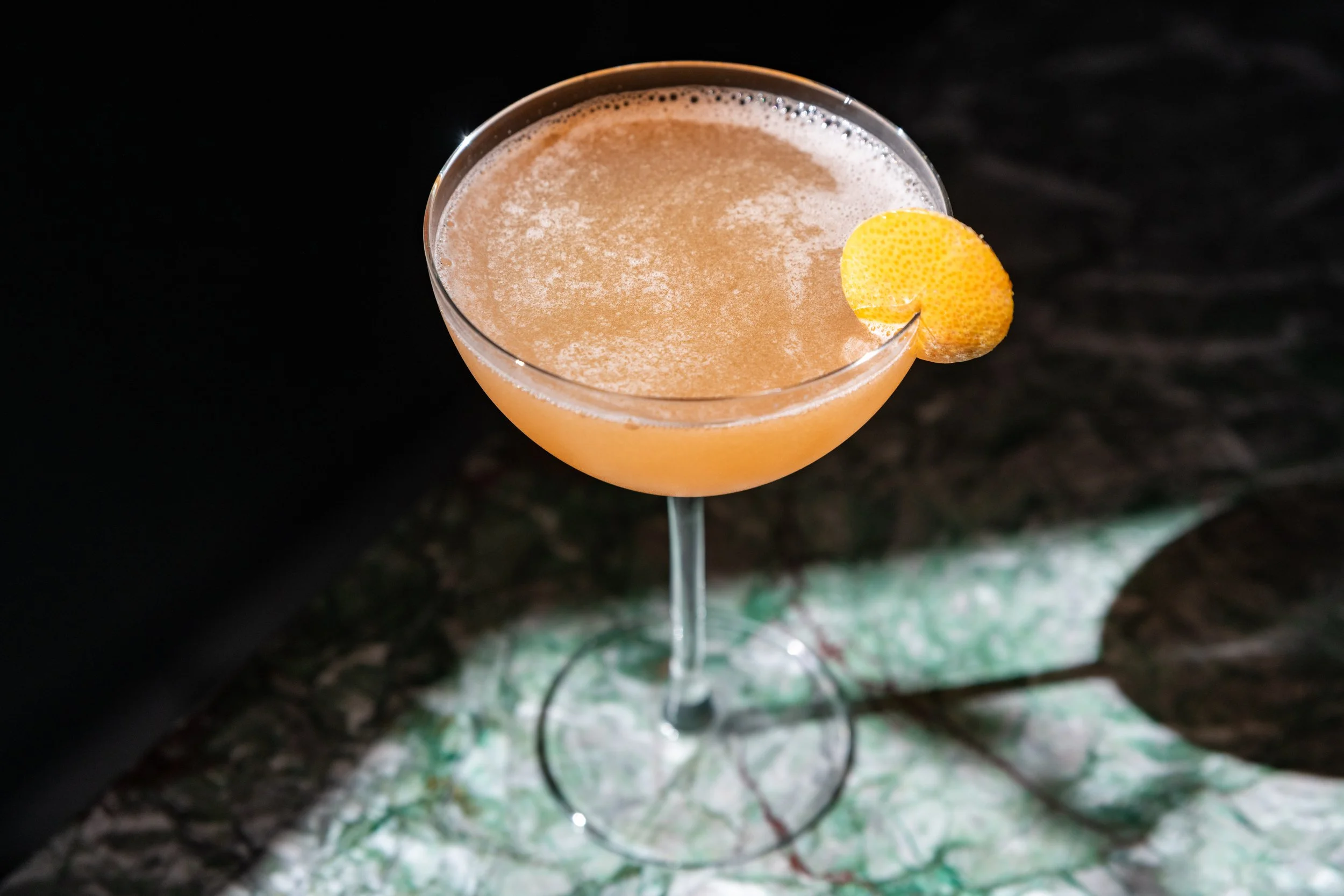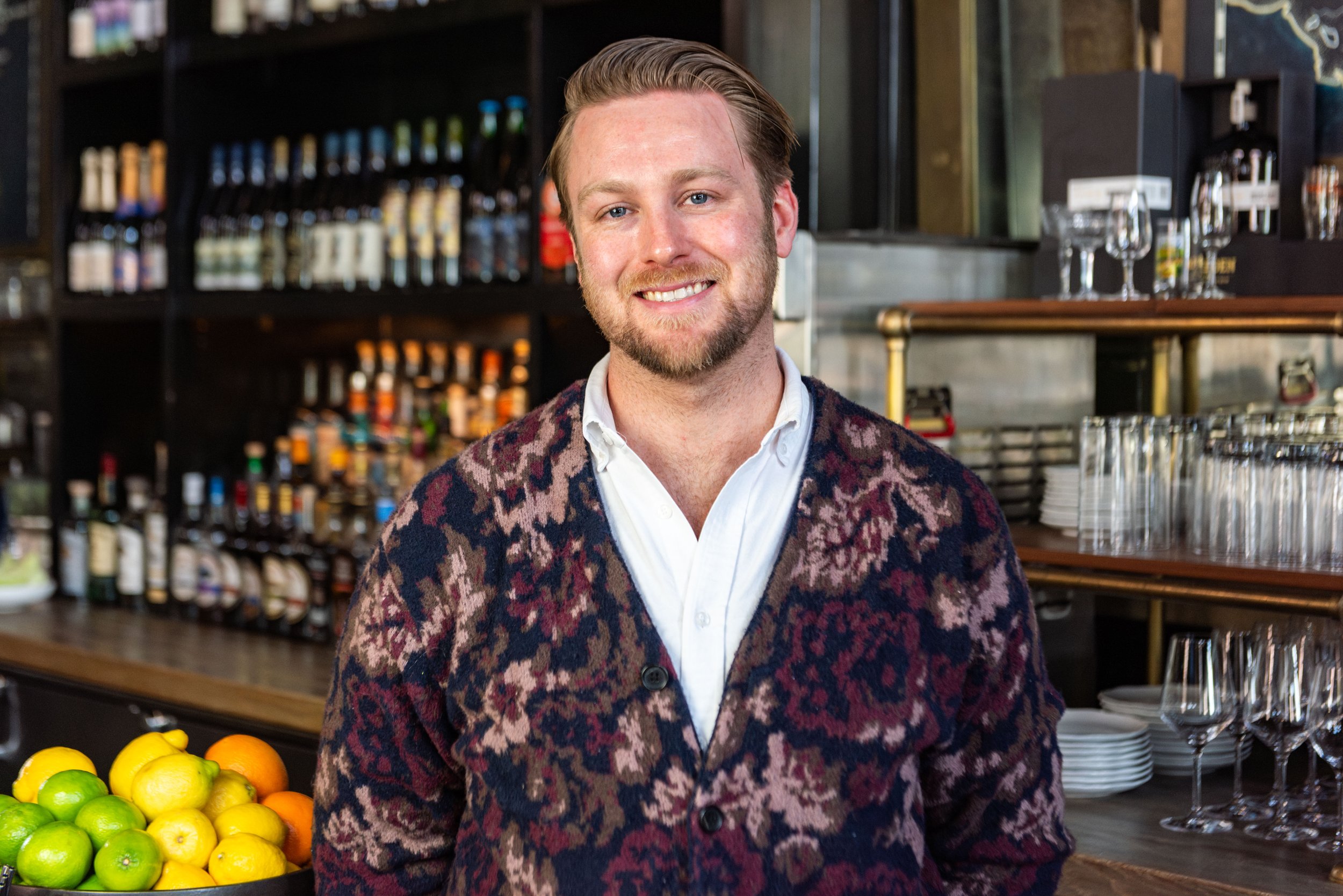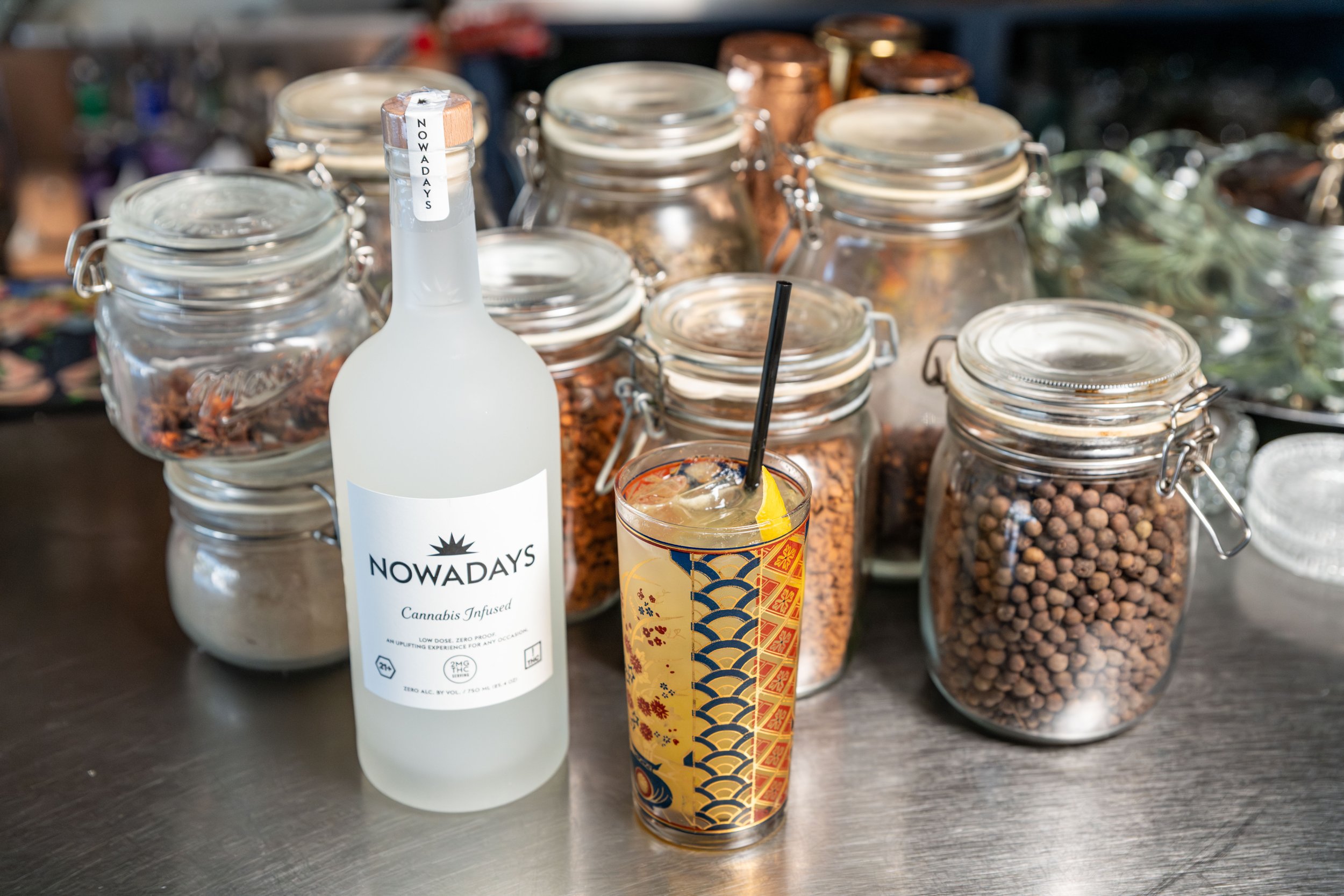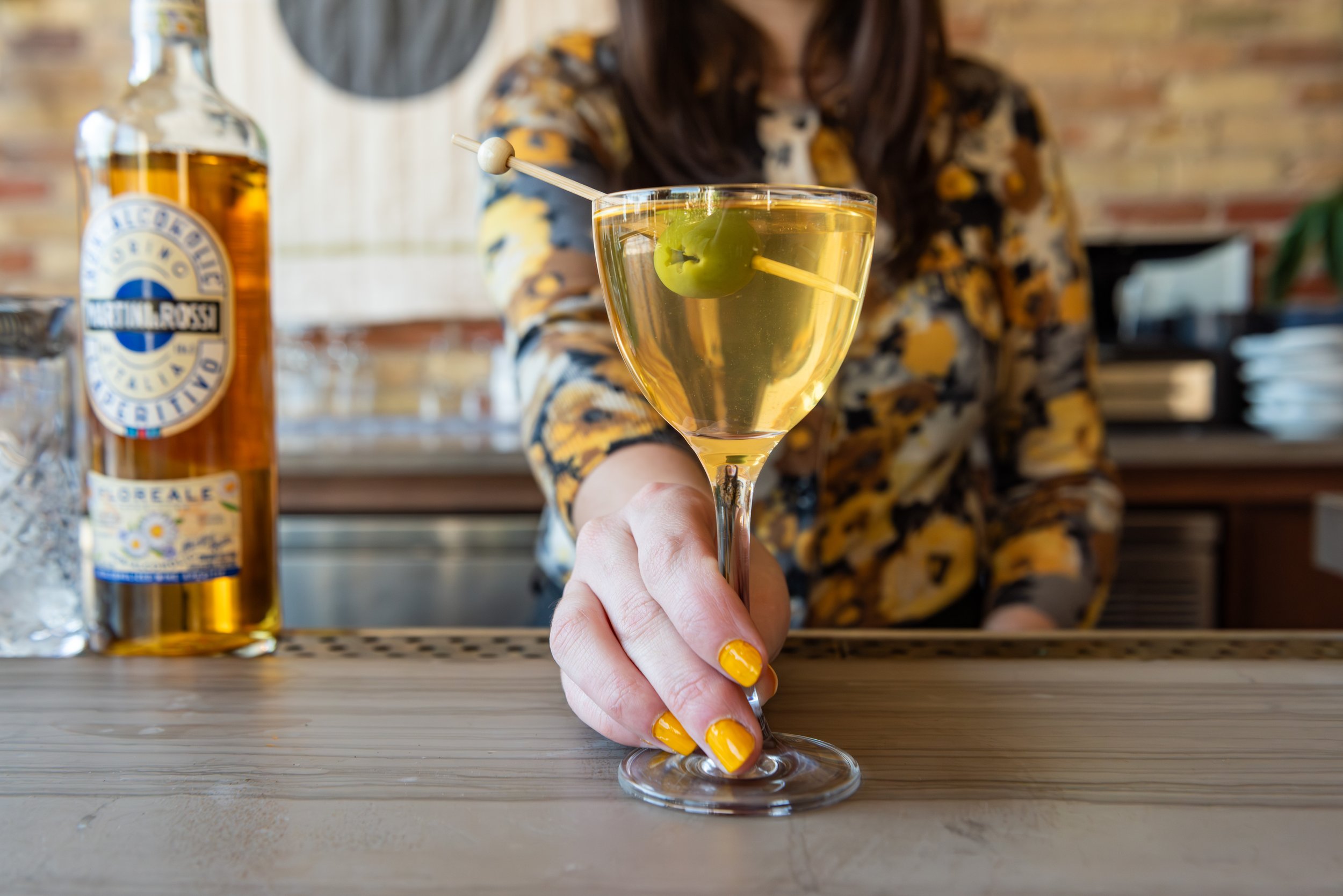Martini Mania
Whether shaken or stirred, these New York City bartenders are expanding the martini canon.
Some might say martinis are synonymous with New York City. These days, the classic cocktail, which has been a go-to for Manhattanites for many years, seems to be having something of a renaissance. Bartenders are taking the simple recipe to new heights with modernized builds, tech-heavy batches, and ingredients far outside the realm of typical well spirits and standard vermouths. Here’s a look at a few that are helping to usher in the next generation of martini madness in the Big Apple.
Steakhouse Martini #2
In the hopes of adding a new mainstay to the host of canonical cocktails at The Dead Rabbit’s flagship bar, General Manager Ian Alexander took inspiration from American drinking traditions for his Steakhouse Martini #2. “We were thinking about the best, most iconic martinis, and it’s the steakhouse martini—cold vodka shaken into a huge glass.” Alexander shakes his vodka-based martini, but that’s where the similarities with its predecessor end. To capture the whole steak dinner in a single sip, he incorporates flavors of charred lemon and rosemary. They get infused into the vodka and dry vermouth, respectively, and Alexander also adds a touch of Massenez rosemary liqueur that’s “really potent without being artificial. It rounds out the rosemary flavor instead of it being resiny and piney.” In addition to the vermouth, verjus and chenin blanc provide nuanced balance, and a final touch of pisco and peach liqueur help boost fruity and floral notes. Once it’s poured and plunked with a Cerignola olive, the Steakhouse Martini #2 gives classic cocktail sophistication with a whisper of fresh flavors.
WILO
When constructing the cocktail menu for the opening of Coqodaq, Bar Manager Matt Chavez knew he needed to stir up some serious martini game to match the Flatiron restaurant’s luxe atmosphere and accompany Chef Seung Kyu Kim’s pristine Korean fried chicken and banchan. One of two specialty martinis on the menu, the Wilo is a direct result of Chavez coming across a bottle of Mancino Sakura vermouth while training at Cote. “[The vermouth] has incredible cherry blossom aromatics. It’s an awesome ingredient I fell in love with,” he says. With the new ingredient as his jumping off point, Chavez looked for an additional modifier that was equally “aromatic and pretty.” The answer was Umenoyado’s green tea-infused umeshu, with “woody, grassy notes and really bright, delicious fruit.” Next, Chavez needed a base spirit to support these delicate flavors, and settled on gin. To tie it all together, he balances the cocktail with verjus—”I love that as an alternative acid”—and tops it with a grapefruit coin. “I don’t see it going anywhere,” he says. “It’s a lovely little crowd pleaser.”
PTO
Having previously had success with a caprese salad-inspired martini during his time at Jac’s on Bond, Beverage Director Trevor Langer looked to develop his next seasonal and stirred variation at Porchlight. With fresh tomatoes and peaches handy, he decided on a “Southern-themed” cocktail that he dubbed the PTO. “Peach-tomato salad is big in Georgia,” he explains. Once his vodka is infused with peak season fruit, Langer fat washes the spirit with olive oil to add luscious texture and savory flavor. Hits of Lustau blanco vermouth and peach liqueur incorporate subtle sugar to boost the fresh flavors, and Langer uses Champagne vinegar to provide acid. “Some people say martinis are too boozy,” he says. “I love something slam-able and spirit-forward. It may be intimidating on a menu, but as soon as people order it, they get four more.”
SUmmERTIME SADNESS
Temple Bar was built on martinis. It became known for them in its first iteration in the 80s, and when the NOHO bar was restructured under the direction of Attaboy’s Michael McIlroy and Sam Ross in 2021, the duo made it a priority to maintain the essence of the lively cocktail lounge, dedicating about a third of the menu to the drinks. To put her stamp on the selection, Head Bartender Samantha Casuga concocted the Summertime Sadness. “On paper it reads easy—vodka, cucumber, and elderflower,” she says. “But the beauty of this is that it drinks a little bitter.” After choosing vodka as her “blank canvas,” Casuga took inspiration from Attaboy-style builds, focusing on simplicity with minimal ingredients. She muddles a couple of slices of cucumber into the vodka, and stirs it with an ounce of Cocchi Americano and a dash of elderflower liqueur. “There is a stigma that if you’re a ‘real’ martini drinker you steer away from vodka, but this will excite you,” she says. “[Summertime Sadness] is a Lana Del Rey song. She is a very beautiful siren, but also such a bad bitch, and this drink is that too.”
JUST A LYCHEE
Beverage Director Gregory Kong was determined to make a lychee martini “that doesn’t suck” for the menu at Nomad Tea Parlour. “I don’t love lychee in general,” he says. “I liked the challenge of making it taste good.” In order to make the oftentimes cloying cocktail more palatable, Kong aimed to highlight the dynamic flavors of the lychee. He splits the fruit component of the cocktail between lychee and strawberry liqueurs and adds grapefruit juice. “I find that lychee has that [strawberry] note, and then I add a little grapefruit for florality.” Rather than opt for a neutral base spirit, Kong builds depth with Ming River baijiu and white peony tea-infused Empirical Soka, inspired by the restaurant’s tea parlor concept. “The Empirical being a sorghum-based spirit, they work well together,” he says. “And the Ming River is great. If you're looking for a little fruity note or florality, you can coax that out instead of the funkier notes.” The martini is fruit-forward while balanced and complex. “This outsells the others like 2:1,” says Kong.



